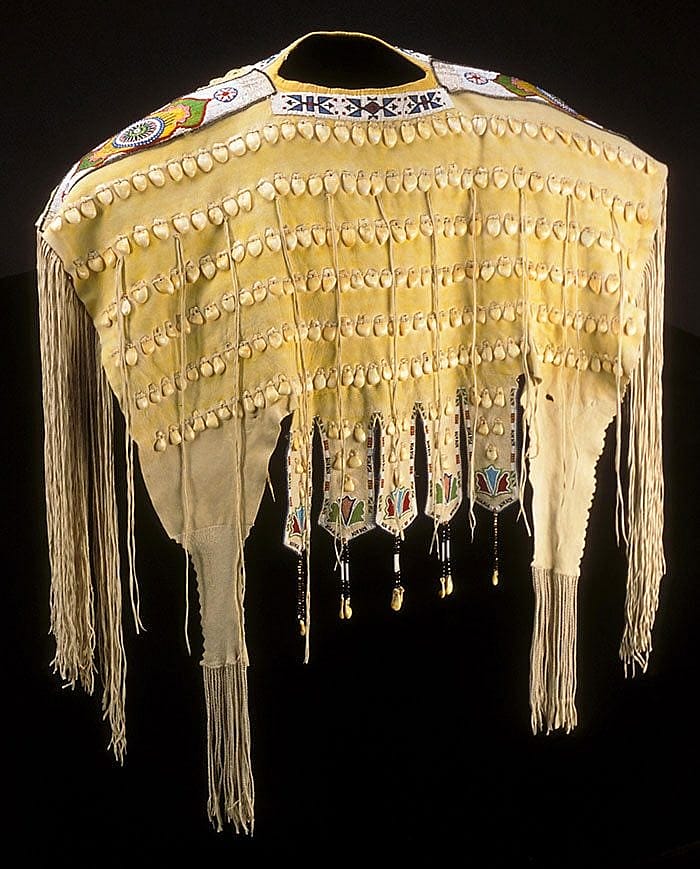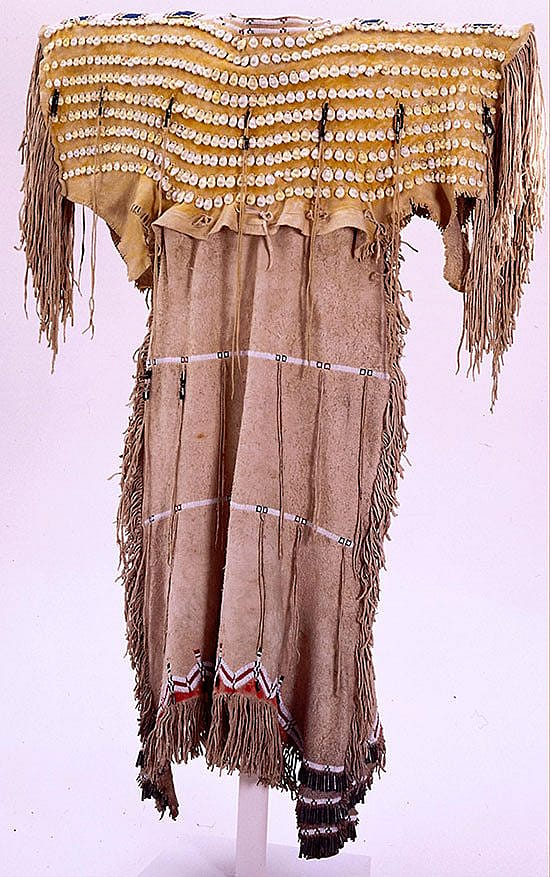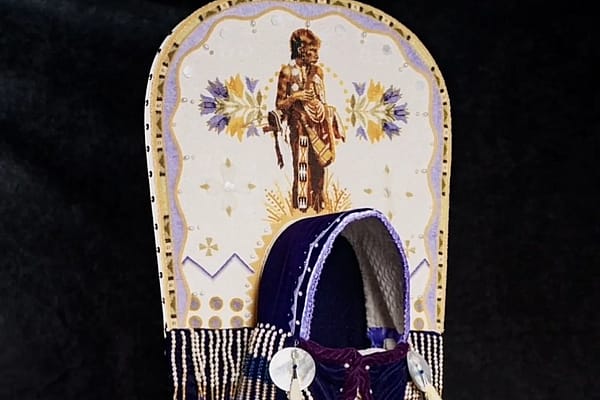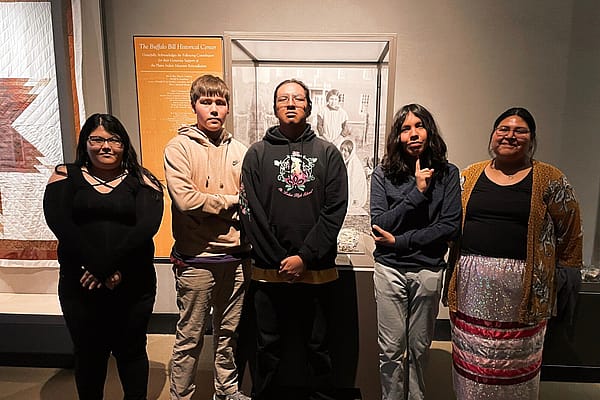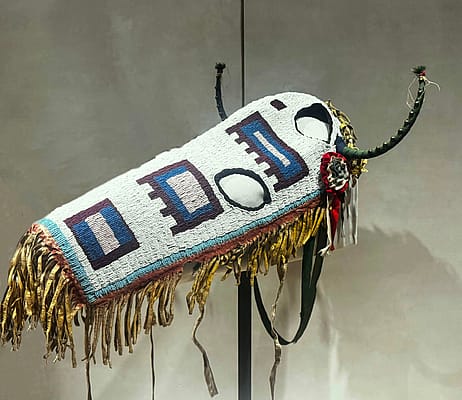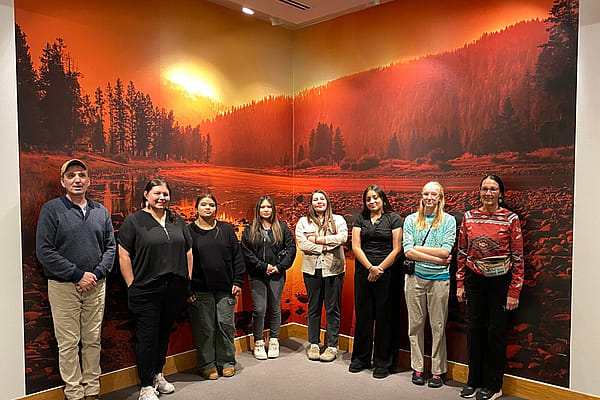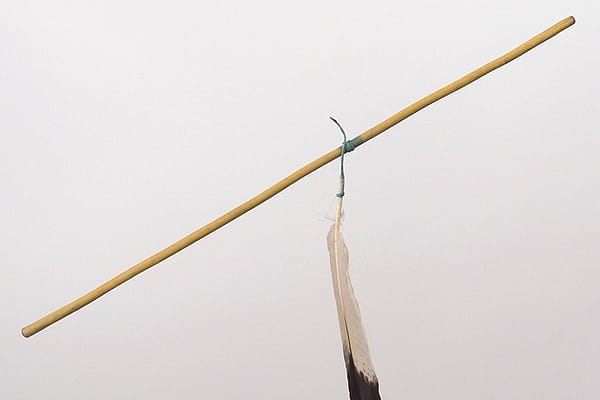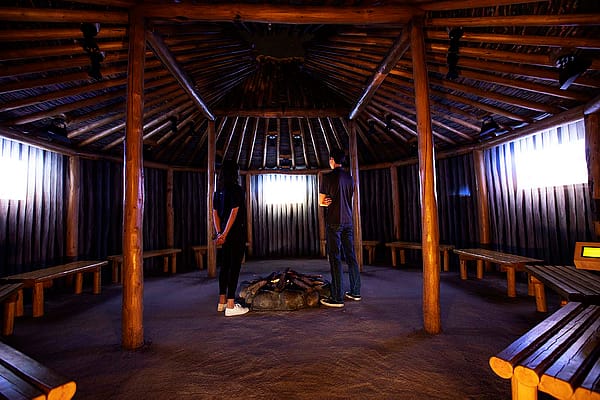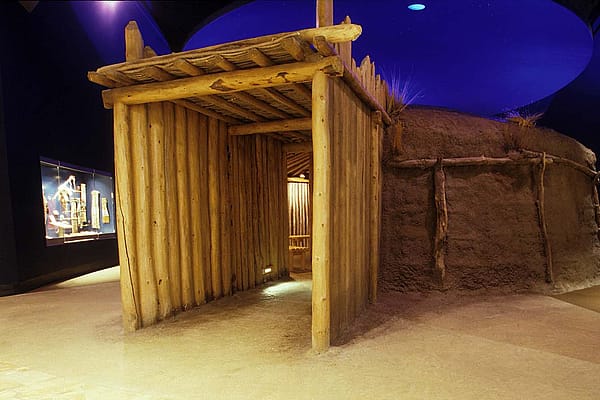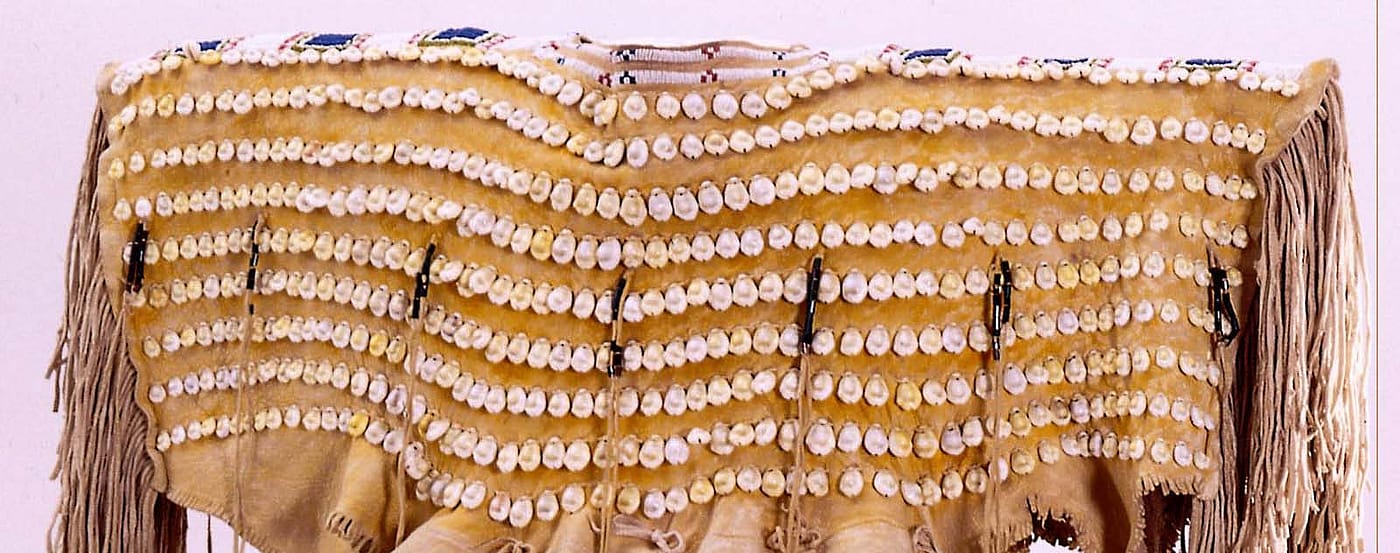
Top 10 Visitor Questions to the Plains Indian Museum—Eye See Teeth
Q: What are the origins of elk teeth?
Q: What are the origins of the shells (cowrie and dentalium)?
Two elk teeth remain after everything else has crumbled to dust… and for that reason the elk tooth has become an emblem of long life. When a child is born, its parents desire long life for it and for this reason an elk tooth is given to a child.
— Oku’te, Lakota Elk Dreamer, early 20th century
A: The ivory “eye” teeth can be found in the maxilla (upper jaw) of elk. Elk ivory was one of three white objects commonly found on Plains Indian hide dresses.
On the Great Plains, elk tooth dresses differentiated the women who wore them. The rows of ivory teeth stood out against the normal canvas of animal hide background. More importantly, these dresses symbolized a family’s status and stature. Each elk has just two ivory teeth, and so the accumulation of teeth on the dresses could represent dozens or hundreds of elk, signifying a man’s hunting prowess or means to trade for teeth. On the Plains, 100 elk teeth would buy a good horse. A family wearing these items “demonstrated a woman’s pride and love, as well as her aptitude for economic industry within the village,” and her wish for her child’s longevity. These dresses were the epitome of Plains finery.
A: The other objects found on Plains Indian clothing were round cowrie (sea snail) shells from the Indian and Pacific oceans and slim, tubed dentalium (mollusk) shells from the Northwest Coast. Cowrie shells look very similar to elk teeth, and were used as currency by peoples in Africa, India, Southeast Asia, and Oceania. Dentalium shells functioned similarly with tribes on the Northwest Coast. Through the process of intercontinental trade for cowrie, and with the Missouri River as a trade conduit, dentalium and cowrie shells became valued items for barter and adornment among Plains tribes.
